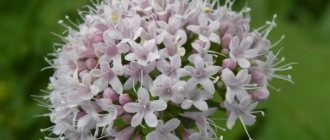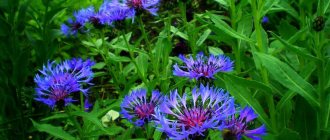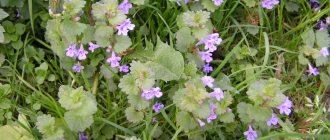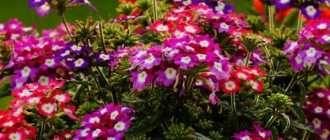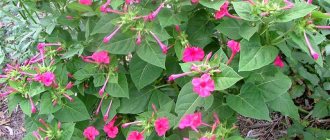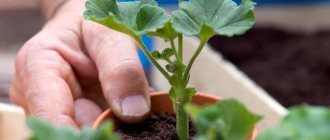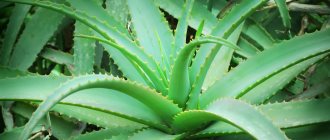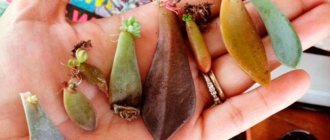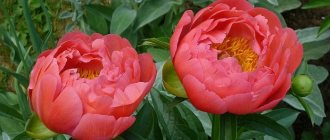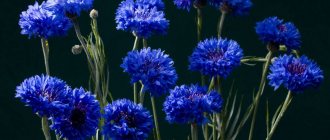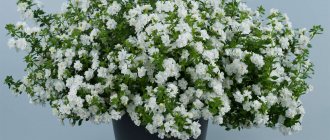Statica or limonium or kermek is an unpretentious plant that can often be seen on borders or rock gardens.
The plant gained particular popularity due to its resistance to diseases and adverse weather conditions.
Statica, planting and caring for it in open ground is very simple and accessible, creates an incredibly beautiful colored “blanket” when growing different species and varieties in groups.
The flower is not pretentious, it is modest, but at the same time very beautiful.
To grow Kermek on your site, you need to familiarize yourself with some of the features of flower care.
Photos and names of species and varieties of statice
Kermek is grown as an annual and perennial. It is a subshrub that grows up to 150 cm in height.
The leaves of limonium are elongated, straight, and collected in a rosette. Most often they are basal, and at the top the stem is practically without leaves.
During flowering, beautiful inflorescences of white, yellow, blue, purple, and pink are formed.
Depending on the type and variety of the plant, the flowers are monochromatic or multi-colored. Limonium blooms at its peak in mid-summer.
Statica is a unique plant that allows every gardener to choose the variety he likes best.
Did you know?! This beautiful flower is not only distinguished by its abundant and bright flowering and decorates areas, it also has medicinal properties. Since ancient times, dyes have been obtained from it, which were later used in dyeing carpets and leather. Kermek root contains so-called tannin. The latter is used in the leather tanning process. Traditional medicine is also well acquainted with this flower. It is used as a healing and hemostatic agent.
Gmelin statice (Limonium Gmelinii)
This species has a height of about 50 cm. It is grown as a perennial plant. Gmelina is considered one of the most cold-resistant species of limonium.
During flowering, large inflorescences of bluish-violet color are formed.
Broadleaf Kermek (Limonium latifolium)
Kermek broadleaf has purple inflorescences, its leaves are wide and green.
Very beautiful view, looks impressive when planted in groups.
Kermek perez (Limonium perezii)
The Perez species is native to the Canary Islands. It is found very rarely in our country and is considered an exotic plant.
You can recognize the species by its large inflorescences and oval leaves. Inflorescences are formed in all shades of blue and lilac.
The flower loves heat very much, so it is suitable for growing in regions with hot and long summers.
Kermek bonduelli (Limonium bonduellii)
Bondwelli grows up to 150 cm tall. This species is grown as a perennial.
Blooms white or yellow. This elegant plant is suitable for both single and group planting.
Chinese Kermek (Limonium sinensis)
Chinese kermek is grown in the central zone of our country as an annual.
This species appeared not so long ago. Plant height – 70 cm.
A distinctive feature of Chinese kermek is its small inflorescences of white or cream color.
Notched Kermek (Limonium sinuatum)
Medium-sized plant with small inflorescences.
Flowers can grow no more than 1 cm in diameter, their color can be white, lilac, blue or pink.
A huge variety of plant varieties allows you to choose one or another type to decorate any area.
Features of Tatar Kermek
Kermek Tatarian (also known as limonium, statice, dried flower, sea lavender and immortelle) is described as a herbaceous plant of the Svinchatkov family. Statice can be annual, biennial or perennial. The root system of the shrub is taprooted, capable of extracting moisture from the deep layers of the soil.
You can find the plant in nature everywhere
Kermek flowers look like bells, collected in inflorescences shaped like a panicle or brush. The color of flowers varies greatly among different varieties and wild species: they can be white, yellow, pink, lilac, violet, blue, purple.
Attention! The bush is used not only for decorating the garden or making bouquets. It has excellent honey-bearing properties. Components for medicinal products are obtained from individual varieties.
When is the best time to sow seedlings?
Growing Kermek from seeds has some peculiarities, although the plant is considered quite unpretentious.
The most important thing is to accurately determine the timing of sowing.
If you decide to grow limonium in pots or boxes, then it is recommended to sow from mid-February.
When growing in a greenhouse, you can sow the seeds no earlier than mid-April.
Its optimal temperature should be around +17-22 °C.
The fact is that the plant loves heat very much, so you need to wait until the soil warms up well.
Correctly chosen sowing time affects the abundance and splendor of flowering of the subshrub.
Varieties that are very popular among gardeners
Perennial garden sorrel - growing in the garden
Thanks to breeding work on wild species of statice, many varieties of this plant have been developed. Some of them can be found in summer cottages and gardens more often than others. It is recommended to purchase Dutch-made seed material.
- Violetta is a medium-growing variety of broadleaf Kermek. It is distinguished by highly branching shoots. The inflorescences are colored lavender.
- Blue Cloud or Blue Cloud is another cultivated subspecies of broadleaf kermek. The bushes of this variety are quite tall and have spreading stems. The flowers have a purple tint.
- Confetti. A statice variety bred on the basis of Chinese kermek. The height of the bush is small, about 0.5 m. The inflorescences are elegant, soft cream in color.
- Elegant. Another popular variety obtained as a result of selection of Chinese kermek. The height of the plant reaches 70 cm, the flowers have a creamy white color.
- Kermek Crimean is a flower mixture of varieties of Kermek notched. The height of the plants varies from 30 to 80 cm. When purchasing them, you can expect to receive bushes with pink, blue, yellow or purple inflorescences.
- Mixed Hybrids. A mixture of medium-sized varieties of notched statice up to 45 cm high. The corollas of flowers in it are painted in various shades of purple, white, yellow, blue and pink.
- Supreme A mixture of statice blue and pink colors. The bushes in it have an average height of about 60 cm.
- Shamo. The mix consists of a series of varieties of notched kermek, reaching a height of 70 cm. This mixture includes plants with inflorescences of various shades of pink, from rich coral to soft salmon.
Varietal mixes have a rich palette
- Fortress. Another colorful mix with flowers in shades of purple, yellow, white, blue and pink. The height of the bushes in it is 70-80 cm.
- Compinidi. A harmonious series of varieties with inflorescences of blue, lilac, blue and pink shades. The bushes are compact, no more than 0.5 m in height.
- Petit Bouquet series. Mix of low-growing varieties no more than 30 cm in height. The inflorescences of the plants in it are painted white and all sorts of pastel colors: light blue, pale lilac, soft pink or milky cream.
- Blue River. Blue River is a notched statice whose flowers, as the name suggests, play in all shades of blue. This mixture of cultivated subspecies reaches a height of 50 cm.
- Epricot is a medium-sized variety up to 60 cm high. Its flowers have a soft apricot color, for which the plant got its name.
- Lavendel. The bushes of this variety are quite tall - up to 80 cm. The plant is covered with soft lilac flowers.
- Iceberg. The length of the stems of this variety reaches 75 cm. The inflorescences are distinguished by the snow-white color of the petals.
- Nachtblau. Bushy variety of notched kermek. Its shoots stretch to almost 1 meter in height. The flowers are deep blue in color.
- Rosenshimmer and American Beauty. Two quite similar varieties with shoots up to 60 cm long. The first is distinguished by the smoky-lilac color of the inflorescences, the flowers of the second have a bright pink color.
Choosing soil for planting seedlings
Kermek can be sowed in previously prepared soil or purchased in a store.
The purchased soil mixture is already ready for sowing, as it contains all the necessary nutrients for the normal development and growth of the flower.
If you decide to make the soil mixture yourself, then you need to follow the following instructions:
- First, ordinary garden soil is collected from the plot.
- Next it is mixed with sand.
- The resulting substrate is sifted through a sieve. This measure is necessary in order to clear the ground of small stones, branches, and roots.
- Next, heat the soil in the oven for 2 hours at a temperature of 100°C.
- The heated soil is cooled and watered with a weak solution of potassium permanganate to disinfect it.
- After this, water it with warm water.
The soil mixture is ready for sowing, now you can begin processing the planting material.
Preparing seeds before sowing
Another important point when growing statice from seeds is proper seed preparation.
Planting material for limonium is long ribbed seeds covered with a hard shell.
This is why seeds will take a very long time to germinate if measures are not taken.
To make the planting material germinate faster, you need to rub it a little with sandpaper.
Next, the seeds are kept in damp sawdust and a preparation called Epin for 2-3 days.
Growing statice from seeds
The perennial statice plant can reproduce well on its own by self-sowing. Its flowering is very lush, and its fringed paniculate inflorescences stand well when cut for a long time. In this regard, florists often use Kermek when creating bouquets and compositions, including dry ones.
Sowing seedlings
The seeds are covered with a fairly durable shell, so before you start sowing, they need to be scarified. To do this, take a rough file or sandpaper and run it along the noses of the seeds. Then they are immersed in Epin’s solution for several hours or kept in moistened sawdust for two to three days.
Sowing of seedlings is carried out in February or the first days of March. To do this, use peat or humus pots filled with moistened, sterile, loose soil mixture, in each of which only one seed should be placed. Next, the seeds should be sprinkled with a thin layer of soil. The container with the pots should be covered with glass on top and placed in a place with an air temperature of 16 to 21 degrees. If everything is done correctly, the first seedlings may appear 1.5–2.5 weeks after sowing. If you want the seedlings to appear much earlier, then use a bottom heating system.
Growing seedlings
When growing seedlings, do not forget to provide systematic ventilation to the crops. The emerging seedlings will need to be provided with regular watering; after this procedure, do not forget to carefully loosen the surface of the substrate around the plants. Picking seedlings into individual pots or cups is only necessary if a container, box or small cassette has been chosen for growing them. It is carried out when the plants form 2 true leaf blades. It is important to pick seedlings in a timely manner, because their root system grows very quickly, and it is quite large and has a long tap root.
The seedlings must be hardened off and you need to start doing this in mid-April. To do this, the container with the plants should be moved outside every day, and it is necessary to gradually increase the time the plants spend outside. Once the seedlings can be left in the fresh air for the whole day, they will be completely ready to be planted in open soil.
Growing statice from seeds (statice, limonium, kermek)! /Grow statice from seed
Sowing seeds
Having decided on the method of cultivation, they begin to sow statice.
To do this, prepare boxes, pots, cups or any other container. The prepared soil mixture is poured into containers.
Next, lay out the seeds and sprinkle earth on top. The containers are covered with film to create a greenhouse effect.
Next they wait for the first shoots to appear. After this, you need to remove the film and place the containers in a sunny place.
Conditions for seed germination
Statice seeds do not germinate very quickly. The fastest time is 10 days.
In some cases, the first shoots appear only after 21 days.
Such a long germination period is explained by the fact that all the necessary conditions were not created.
For the seeds to germinate, you need:
- ensure the room temperature is about +20-24°C;
- water correctly so that the soil is constantly moist;
- warm the containers with a 60 W fluorescent lamp (daily for 4-5 hours).
If everything is done correctly, you will soon be able to observe the appearance of the first shoots.
As soon as 2-3 true leaves form on them, you can start picking.
Kermek after flowering
Statice seeds ripen very slowly. In order for them to be suitable for germination, all inflorescences must be removed from the plant except 3-4 of the healthiest and strongest.
Collecting seeds
Seed collection begins in the fall, after flowering has completed. The inflorescences are cut and dried. Seeds are removed from dry capsules and used for sowing for 3-4 years.
Wintering
Perennial Kermek overwinters well without shelter, but it is better to protect the bushes from severe frosts. To do this, plants are sprinkled with dry leaves or covered with non-woven fabric.
Picking seedlings
This stage of growing limonium is controversial. Some gardeners claim that it is simply necessary, while others, on the contrary, do not recommend picking seedlings.
In any case, if the seeds germinate very often, they need to be planted.
This is due to the fact that as the seedlings grow, they will not have enough sunlight and space.
The roots will begin to intertwine with each other, then it will be difficult to transplant them to a permanent place in open ground.
Picking Kermek seedlings:
- It is recommended to water the containers with seedlings generously a couple of hours before the procedure. This will help soften the soil and make it looser and more pliable. This will make it easier to remove the plants without damaging the fragile root system.
- Prepare cups, pots or other containers and fill them with soil.
- Carefully remove the seedlings and place them in new containers.
- Next, they are watered and put in a sunny place.
The last point is especially important after picking plants, since they really need light.
If the seedlings do not have enough of it, they will begin to stretch out and become pale and frail. This also needs to be taken into account when transplanting to a permanent place.
Lack of light can cause statice to stop blooming.
Planting seedlings in open ground
When transplanting statice into open ground, you need to take into account the composition of the soil and the illumination of the area.
It is also important to choose the right time so that the heat-loving plant is not damaged by frost.
When to transplant seedlings
The timing of transplanting kermek to a permanent place differs. They depend on the climatic characteristics of the region of the country.
The optimal temperature for growing statice is +22-27°C.
Although the plant is considered unpretentious, it can freeze at a temperature of -5°C.
Thus, transplanting into open ground occurs around the end of May, but it is better to leave the plant at home until June.
Choosing a place to grow
You need to choose a place that is well lit with predominance of sunlight throughout the day.
Flowering will be longer and more abundant in hot sunny weather.
It is also important that the area is protected from the wind.
How to properly plant seedlings on the site
When transplanting seedlings to a permanent place, the main thing is not to damage its roots.
That is why the holes for seedlings need to be prepared the same size as the containers in which the seedlings were grown.
The seedlings must be carefully removed from the containers and, together with a lump of earth, placed in holes in a new place.
You need to act very carefully, this will allow the plants to quickly adapt to the new place.
After the seedlings are transplanted, they need to be watered with salt water. For this, 1 tbsp. l. salts are diluted in 10 liters of warm water.
Another important point when replanting is the correct distance between individual plants.
If you plant seedlings too close to each other, this can affect the size of the inflorescences, they will become smaller.
Thus, the optimal distance between plants is more than 25-30 cm.
When to plant depending on the region?
Since in our country the climate of one region differs significantly from the climate of another, the planting time for statice is different for each region. In warm regions, kermek grows as a perennial that is capable of spreading seeds on its own.
In regions with less pleasant climates, limonium is an annual plant and must be planted as seedlings. When exactly is it necessary to sow and transplant seedlings into the ground in different zones?
In Moscow and the region
Seedlings should be planted in early March, picking is carried out in mid-April, and planted in open ground in the last days of May (be sure to cover with film).
In these areas, perennial statice grows, which tolerates winter well.
Middle lane
Seeds must be planted after March 15th. Transplant seedlings no earlier than the first days of June.
In the Urals
Sowing seeds on March 15-18, picking occurs at the end of April. In early June, you can plant seedlings outside.
In Siberia
Despite the cold climatic conditions of this region, statice also blooms here. In the first month of spring, you can already sow seeds.
In mid-June, the plants can be transplanted into the garden bed.
In the Leningrad region
All dates from planting to planting in open ground coincide with the Moscow region. Perennials also thrive here.
Caring for statice on the site
Many gardeners know that statice flowers are very unpretentious. They can grow even in poor soils and with minimal care.
However, by providing it with proper attention, you will get a very beautiful and profusely flowering plant.
How often to water
The plant can tolerate drought well. It practically does not require constant watering.
The flower should be watered only in very hot weather, approximately once every 40-45 days.
You only need to use warm, settled water, as the flower loves warmth very much.
Water only at the root so that moisture does not fall on the plant itself.
Be sure to water it with salt and water once every time. After watering, it is better to loosen the soil so that oxygen can better penetrate to the roots.
How often and with what to fertilize
It is not necessary to feed limonium; it grows and blooms well without fertilizing.
If the soil on the site is too poor, then you can take care of the plant and feed it with mineral supplements.
You need to fertilize 10 days after planting the seedlings in a permanent place. Then you can apply fertilizer every 3-5 weeks.
If the soil is fertile, then fertilizing statice is not needed at all.
After flowering
After flowering, garden flowers begin to fade and turn yellow. Before frost sets in, they need to be cut right next to the soil.
Cover with straw, leaves or twigs, and put covering material on top. To prevent the material from being blown away by the wind, it needs to be weighed down with something.
You can use stones and sticks. Cut flowers can be placed in a vase at home. This dried flower looks great and lasts a long time.
Dangerous diseases and pests
Problems with growing statice flowers arise when the conditions of maintenance are violated: waterlogging, shade, lack of winter shelter. Excessive watering leads to rotting, from which the plant cannot be saved. Among insects, aphids can harm Kermek grass. You can get rid of it using tobacco infusion or insecticides.
The flower is not afraid of the scorching sun
Multi-colored openwork inflorescences of Kermek Tatarian can decorate any garden plot. Its bushes grow where other plants do not take root: in open sunlight, on soils of poor composition.
